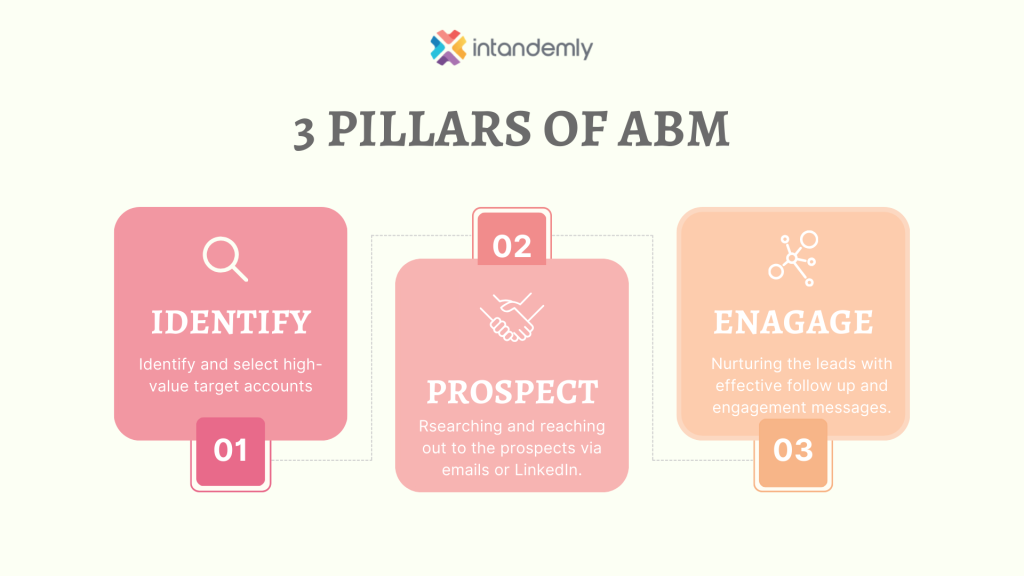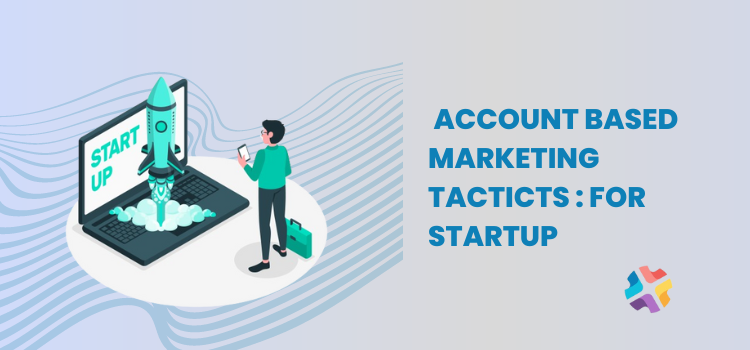Account-based marketing Tactics- 2024
Account-Based Marketing for New Startups
Account-based marketing was only entertained and adopted by bigger corporations and businesses. Mainly because of the high initial capital required to be executed properly. However, in the past few years, major technological achievements have made it easy for even a small Sales and Marketing Teams to implement Account-Based Marketing.
Now that we know smaller teams can use Account-Based Marketing, the question remains, should they?
Account-Based Marketing (ABM) is effective only for B2B Companies with high-value Product/Services. Since the duration of struggle to get a client is uncertain (depending on the target account, it could take a week or even up to a year) the time invested should be taken into consideration.
Is it worth spending a year to get Microsoft to use your $50 per month SaaS product? With the amount, you will end up spending, probably not.
But what if it is $50 per month per user, for 1,000 of their employees? Then maybe yes.
Why account-based marketing?
Account-Based Marketing (ABM) is a strategic approach to B2B marketing that focuses on targeting and engaging specific accounts rather than casting a wide net. The three pillars of ABM are:

Identify:
The first pillar involves identifying and selecting high-value target accounts. This process goes beyond traditional lead generation, as it requires a more strategic approach to pinpoint accounts that align with the business's goals and have the potential for long-term value. Identifying the right accounts involves collaboration between marketing and sales teams, leveraging data and insights to determine which accounts are most likely to convert and contribute significantly to business success.
Key aspects of ABM targeting include:
- Defining your ICP: Clearly defining the characteristics of your ideal customer, including industry, company size, location, and decision-making processes.
- Identifying key decision-makers: Pinpointing the individuals within target accounts who have the power to influence purchasing decisions.
- Prioritizing accounts: Ranking accounts based on their potential value and likelihood of conversion.
Prospect:
Once the target accounts are identified, the next pillar is to reach out to those accounts. This involves researching and understanding the specific needs, challenges, and dynamics of each account. After reseach, it involves connecting with the prospects on the suitable channels; it could be majorly LinkedIn or emails.Tailoring marketing strategies and content to address the unique characteristics of the target accounts helps in building stronger relationships and increasing the likelihood of conversion. Expansion also includes reaching key stakeholders within the accounts through personalized and relevant communication channels.
Engage:
The third pillar revolves around actively engaging with the identified and expanded accounts. This involves creating personalized and targeted campaigns that resonate with the specific needs and pain points of the target accounts. Utilizing various channels such as email, social media, and events, ABM aims to build meaningful connections and nurture relationships with decision-makers and influencers within the accounts. Continuous monitoring, measurement, and adjustment of the engagement strategy ensure that the marketing efforts remain aligned with the evolving needs of the target accounts.
In summary, the three pillars of ABM are to Identify the right target accounts, Expand engagement within those accounts, and actively Engage through personalized strategies to build lasting and valuable relationships.
The answer to "Should my startup use Account-Based Marketing?"
varies widely depending on the level of field you are playing at. If your startup ticks these checkmarks, then please continue reading, this article will prove to be very helpful to you!
To execute Account-Based Marketing for your startup, you need to follow these 5 steps:
- Build an Account-Based Marketing Strategy
- Identify Key Accounts
- Align your Teams
- Focus on Social
- Identify your Channels and Craft the Message
- Qualify and Manage Accounts
Build an Account-Based Marketing Strategy.
To begin with, we need a strategy which creates a strong foundation to build your Account-Based Marketing team. If you are a new startup, you probably are low on headcount. Your Team, however small, need Goals. Think of what you want to gain from Account-based marketing. Leads, converting into Sales!
Two things to keep in mind:
- Understand the Time constrain and Budget Properly! Do not budget more than 30% into Account-Based Marketing
- You need to Identify your objectives because a mission unknown, is one you never Achieved.
Identify your Key Accounts
It might be very hard for you to sit and identify accounts because you are a small team, but you could start with 5-10 key accounts, to begin with. Call this your Beta, and along the way add or remove accounts to fine-tune your process. As you get better, keep expanding.
Quick Definitions
- Account: Accounts are companies you want to work with. They are usually the companies which will be perfect for the product/service your startup is offering!
- Key Account: Key Accounts are your dream companies you want to work with. These companies could be industry leaders.
Align your Teams
Account-Based Marketing requires all your teams to collaborate. Your Startup can start by aligning the sales and marketing teams before attacking your accounts. In case you don't a bigger sales or a marketing team, pick the team which is responsible for revenue in your startup and then try to align with them.
The more involved, as a leader, you are with your teams, the better you understand the needs of all the account. The entire organisation has to bring their ideas to the table, and serve as the need arises.
What do we mean by Aligning the teams?
For instance, given an account, all the teams have to speak the same message, as designed by the marketing team. When an account requests to test your product/service, the development team will create a user testing account with dummy data to demonstrate the power of your product/service.
Focus on Social
While working on your messaging, you need to get social with your key accounts. Follow them on Social Media channels and observe their behaviour. Engage with them and provide value. Share content with them and interact with them!
This should be easy if you selected the accounts, based on the relevancy of their need and your offering. For Instance, Let's assume you are offering a Blockchain-Based Data Encrypting Platform, and you are targeting to work with Data Security Companies with 100+ clients. If the account's VPs and Upper managements are sharing on social media about the importance of Data security for IT companies, you can chip in and share your opinions concerning Data Encryption for IT companies
In the end, Your goal is to socialise with the accounts, build a relationship and show that you are human.
Identify Your Channels and Craft the Message
Your content has to speak to the key accounts. This gets challenging if you have 100+ accounts identified. The interaction here is one-to-one, and if you create mediocre content with generic fluff, people can tell. If you don't grab their attention you'll annoy them.
However, You can repurpose your content by tweaking it a little bit and using it for other accounts in the same tier. But when it comes to the Tier 1 Key accounts, you need to be creative and be very specific.You need to send super personlized emails or messages to the prospects.
When in doubt remember, Creating unique and targeted content and passing it through proper channel is not optional, It's a requirement.
Qualify and manage accounts
Determine how you'll qualify and manage the account. Set the criteria for when a key account becomes a marketing qualified lead, and identify when an account becomes an enquiry and when you wanna handle to sales! As you progress you will learn the process of understanding the stage of an account.
Conclusion
Startups, if not funded, are usually low on resources. So you don't have many takes to get this right. For better result always remember you have got one shot, make it worth their time.
To make things easier, we suggest you use an ABM platform like Intandmely. The tools on our platform are developed to make it very easy for new startups to start implementing Account-Based Marketing. Even if your Team is 1-3 Account-Based Marketing can provide you with powerful tools to start Account-Based Marketing.
Click here to start a 7 day free trial of Intandemly's Powerful tool to get into key accounts
